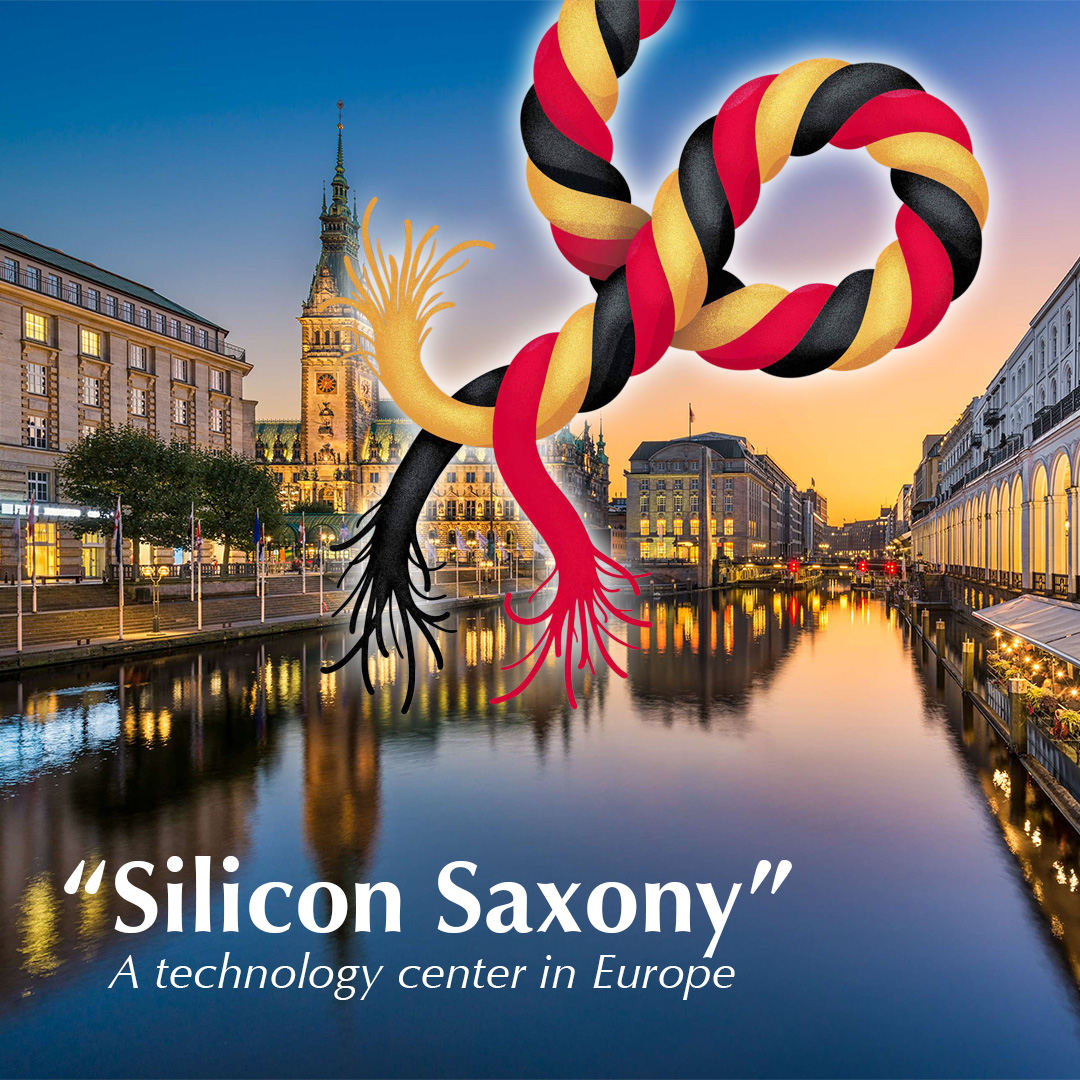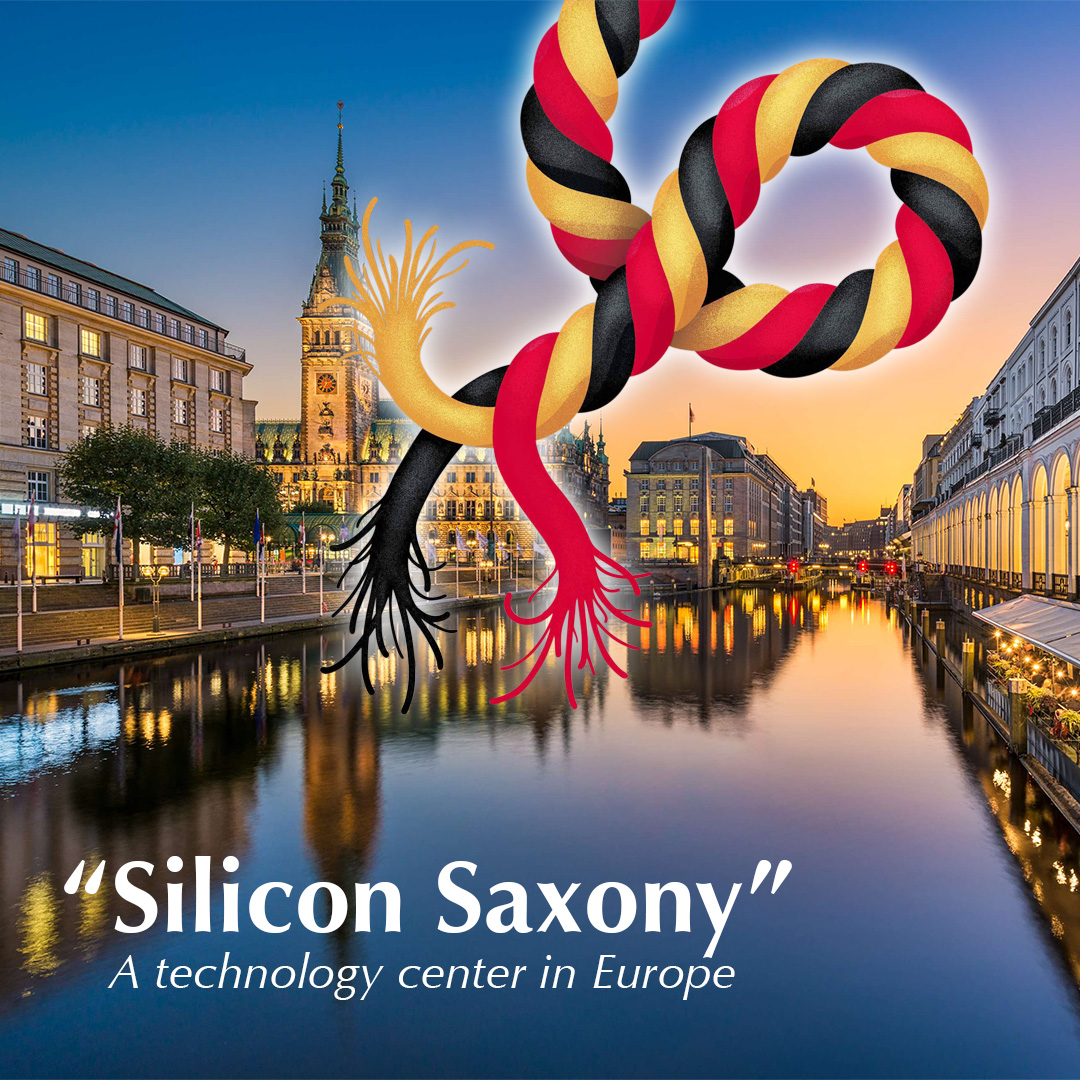“SILICON SAXONY”: A TECHNOLOGY CENTER IN GERMANY

 By: Rizta Pratama
By: Rizta Pratama
Let’s face it, the future of cars is no longer only situated in Silicon Valley.
Distruptive technology built into cars happening in Silicon Valley may give us high hopes of modern transportantion. The installation of advanced technologies such as Internet of things, sensors for self-driving cars and electric fuel is no longer things of the future. It is happening right now.
But a city in the Easternpart of Germany is stealing the spotlight from the hegemonic Sillicon Valley, Silicon Saxony is gearing up to lead the role in the electrification of cars.
The Saxony region in Germany has grown to be one of the biggest microelectronics and IT clusters in Germany and Europe. With around 350 members, Silicon Saxony focuses on technological trends of the present and future, such as nanotechnology, mechanical engineering, biotechnology, medical technology, robotics, Artifical Intelligence, Internet of Things, sensor, and many more. The place supports everything required for future technologies of cars.
The tech-hub was founded in 2000 and has been entirely self-financed through association that connects universities, research instituted, suppliers, as well as similar start-ups industry around the world. As a pioneer of silicon tech-hub in Europe, Silicon Saxony is one of the founding partners of Silicon Europe, an collaboration of twelve European clusters for advanced electronics and software technologies.
Study in Germany for FREE! Find out how here.
The Land of Ideas
The fact of the matter is, Saxony’s history is deeply tied with innovation. Even when the area was in between of the two world wars that temporarily held the productivity, Saxony was their birthplace of many essential products and brands such as steam engine in 1839 and Audi in 1909 - Along with toothpaste, modern bras, coffee filters and many more. After the German reunification in the 1990s, the state started to thrive again. Today, they have a competitive advantage in making lightweight cars, battery cells, and semiconductor vehicles that can process an enormous amount of data that is necessary for self-driving technology.
Though the use of the word ‘Silicon’ may be a play-off of to Silicon Valley, Saxony lives up rightfully to its hallmarked name, Silicon Saxony, with some of the biggest technology and chip companies, such as Infineon and Global Foundries, based there. More recently, BMW, VW, and Porsche also successfully established themselves in Saxony to compete with Tesla. So imagine this: an area with an abundance of leading technology and microelectronics research firms topped with state-of-the-art facilities and intensive business models that are competing globally.
YOU can also study in Germany. Make your dreams come true. For more information click here.
Human Resources is Key
How is Silicon Saxony able to excel rapidly in recent years? Simple. Human resources. Germany is truly blessed with the abandonment of highly skillful and talented human capital from its excellent education system. Germany’s higher education is compellingly attractive to talents from all over the world with six of their universities listed amongst the world’s top 100 in 2018 (Times Higher Education World Reputation Ranking): LMU Munich, Heidelberg University, Humboldt University of Berlin, Technical University of Munich, Free University of Berlin, and RWTH Aachen University.
Saxony itself is proud to have its own university system that contains institutions with traditions of academic excellence. The University of Leipzig, for example, is Germany’s second oldest university and works closely with many prominent firms. Bergakademie Technical University Freiberg is the oldest mining university in the world and is the only institution in Germany with a working mine. Not to mention, it is also Alexander von Humboldt’s alma mater.
Universities in Saxony may be old in age but they have not lost pace with other universities in the country and the rest of the world. When excellence is maintained and instilled over decades, it becomes no surprise that excellence continues to grow within people attending these institutions.
Thinking of studying in Germany? Prepare yourself first by studying German. Get the complete information here!
All Students Welcomed
With its prime location in Central-Western Europe and its excellent educational infrastructure, it’s no surprise that studying in Germany becomes a top choice for many. Saxony has a total of 32 universities and technical colleges. If you’re an international student, you have nothing to worry about. Not only the city has a cheaper cost of living relative to West Germany, but the newly added graduate programs taught in English programs also help to attract more students globally to get education here.
In regards to education, both local and international students alike are exposed to a dual education system; meaning, they go through a combination of practical and theoretical education for courses they take. Students spend half their time in classrooms and other times trained with a company. At the end of their curriculum, students would not only receive a degree but an experience certificate and networks to some of the top companies worldwide.
So what are you waiting for? Be apart of technology advancements where it is happening!
Learn more about European Universities of your choice on ehef.id!








